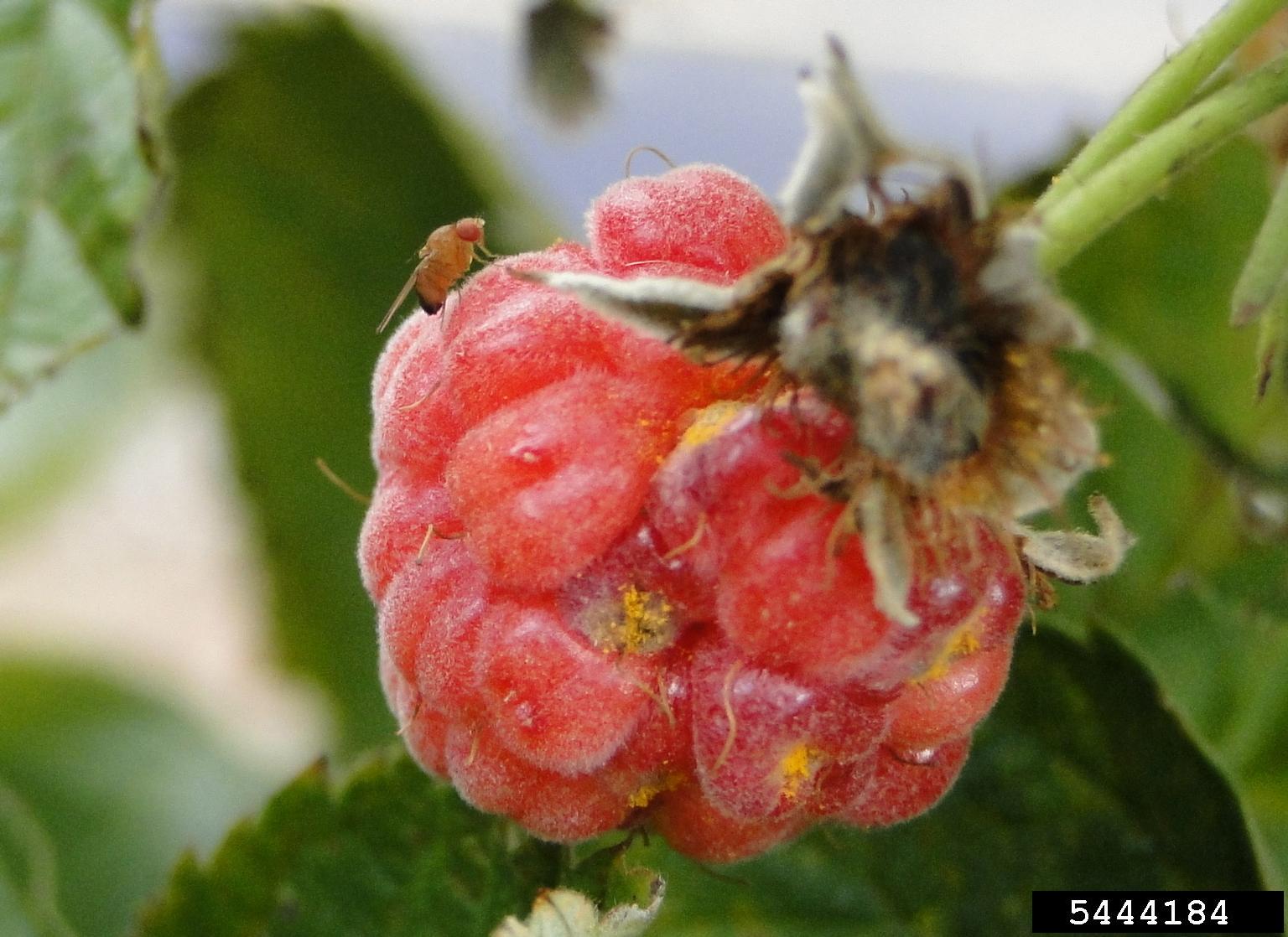Spotted Winged Drosophila Control: Learn About Spotted Winged Drosophila Pests


If you have a problem with withering and browning fruit, the culprit may be the spotted winged drosophila. This little fruit fly can ruin a crop, but we have the answers. Find the information you need on spotted winged drosophila control in this article.
What is Spotted Winged Drosophila?
Native to Japan, spotted winged drosophila was first discovered on the U.S. mainland in 2008 when it infested berry crops in California. From there it quickly spread across the country. It is now a serious problem in areas as far away as Florida and New England. The more you know about these destructive pests, the better you will be able to deal with them. Known scientifically as Drosophila suzukii, the spotted winged drosophila is a tiny fruit fly that ruins orchard crops. It has distinctive red eyes, and the males have black spots on the wings, but since they are only 1/8 to 1/16 of an inch (0.15-0.30 cm.) long, you may not get a good look at them. Break open damaged fruit to look for the maggots. They are white, cylindrical, and a little more than 1/8 of an inch (0.30 cm.) long when fully mature. You may find several inside a single fruit because the same fruit is often stung more than once.
Spotted Winged Drosophila Life Cycle and Control
The female flies puncture or “sting” fruit, depositing one to three eggs with each puncture. The eggs hatch to become maggots which feed inside the fruit. They complete the entire life cycle from egg to adult in as little as eight days. You may be able to see the speck where the female fly stung the fruit, but most of the damage comes from the maggots’ feeding activity. The fruit develops sunken spots, and the flesh turns brown. Once the fruit is damaged, other types of fruit flies invade the crop. Treating fruit for spotted winged drosophila pests is difficult because once you discover that you have a problem, the maggots are already inside the fruit. At this point, sprays are ineffective. Preventing spotted winged drosophila from reaching the fruit is the most effective method of control. Keep the area clean by picking up fallen fruit and sealing it in sturdy plastic bags for disposal. Pick damaged or stung fruit and dispose of it in the same way. This may help reduce damage to late-ripening and unaffected fruit. It also helps protect next year’s crop. Keep the insects away from small trees and berry crops by covering them with fine netting.
Sign up for the Gardening Know How newsletter today and receive a free copy of our e-book "How to Grow Delicious Tomatoes".

Jackie Carroll has written over 500 articles for Gardening Know How on a wide range of topics.